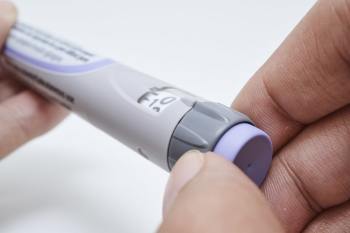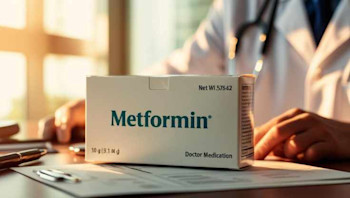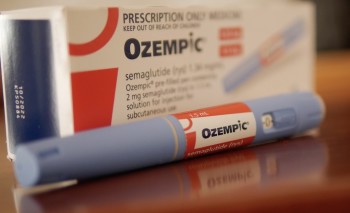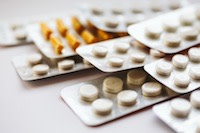Rybelsus: What Does It Do and How Do I Use It?
Medically reviewed by Dr Sultan Linjawi, Endocrinologist & Diabetes Specialist — January 2026
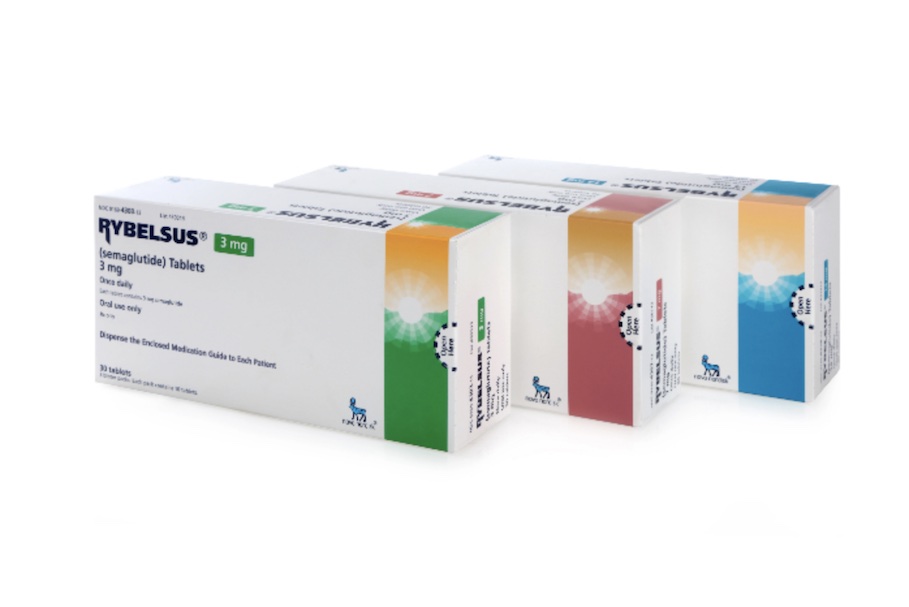
Subscribe to Receive One of Our Helpful Free Guides
Click the guide that would be the most useful
What is Rybelsus (oral Semaglutide)?
Rybelsus is the brand name for a new oral medication used in the treatment of type 2 diabetes. The generic name is Semaglutide and this is the same molecule that has been previously only been available as a once weekly injection called Ozempic.
Ozempic and Victoza (Liraglutide) are small proteins called peptides and normally these are broken down in the gut and no longer work. The major innovation with Rybelsus is the engineering to allow it to be taken orally, not be broken down and yet still be effective.
The normal maximum dose of injected Ozempic is 1mg whereas the maximum dose of Rybelsus is 14mg. The different doses suggest that a lot of Rybelsus is still broken down in the gut before being absorbed.
To read more about Ozempic please see the following blog post What is Ozempic and how does it does it work.
What is the dose of Rybelsus (Semaglutide)?
Rybelsus comes in three different dosages;
- 3mg
- 7mg
- 14mg
What is the Rybelsus starting dose
The starting dose of Rybelsus is 3mg once daily for the first month (30 days). After this time, and if the person is able to tolerate the medication, the dose should be increased to 7mg daily.
If blood sugars are still high, the Rybelsus dose may be increased to 14mg once daily after at least 30 days on the 7mg dose. To avoid confusion it is not recommended that two 7mg Rybelsus tablets be taken to achieve a 14mg dose and instead the 14mg single tablet be taken.
Semaglutide is the synthetic version of a naturally occurring human hormone, called Glucagon-like peptide 1 or GLP-1 that has been modified so that it is less likely to be broken down and therefore has a longer duration of action.
Whether you have diabetes, or you don’t have diabetes, we all make GLP-1. It has become clear that GLP-1 is a really important hormone to help us regulate our blood sugar levels and probably our appetite and weight.
How does GLP-1 work and what is the mechanism of action?
After we eat, GLP-1 is released from the small intestine.
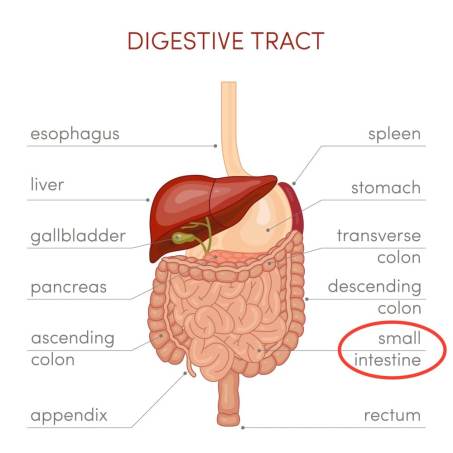
GLP-1 has a number of actions in the body that improve blood sugar levels that include the following:
- Lowers blood glucose levels by stimulating the release of insulin from the pancreas. This process magnifies the release of insulin and is dependent on the blood sugar level. It is does occur if the blood glucose level is low and so GLP-1 medications do not tend to cause hypoglycaemia or low blood sugar levels.
- Reduces the amount of glucose that your liver is producing. Typically, the liver produces glucose, and it does this when you are in periods of starvation. So, the liver is a storage mechanism that can release sugar when your blood glucose levels are low and then store it when your blood glucose levels are high. In people with Type 2 diabetes, this process is completely impaired and the liver produces too much glucose.
- GLP-1 can cause you to feel full, so it increases early satiety. It does this by slowing gastric emptying, slowing the rate of food moving from your stomach into your small intestines. By doing this, the rate of absorption of nutrients into the blood stream is slowed, including glucose, which may reduce your food intake.
How does Rybelsus work?
Rybelsus has a 94% similarity to human GLP-1. It is able to work in a similar way to our naturally occurring GLP-1 in the body and therefore has very similar effects including:
- Increase release of insulin when blood sugar is elevated.
- Less glucose released from liver stores into the circulation.
- Decreased appetite.
How is Rybelsus (Semaglutide) different from GLP-1?
GLP-1 is a naturally occurring hormone found in all people. Rybelsus (Semaglutide) shares 94% of the same structure as human GLP-1, however is synthetically manufactured. Semaglutide has been structurally modified to prevent it from being broken down by an enzyme in the blood called dipeptidyl peptidase-4 or DPP-4.
Rybelsus, like other types of GLP-1 medications (Ozempic, Trulicity, Victoza, Bydureon and Byetta) works by mimicking the body's natural GLP-1 hormone to respond to elevated levels of blood glucose, working when the body needs it.
Rybelsus is taken once daily and is the only oral GLP-1 tablet whereas Ozempic, is an injectable form of semaglutide and it is an example of a once weekly GLP-1. Another example of long acting GLP-1 is Trulicity (generic name Dulaglutide).
Drugs that block the action of DPP-4 are called DPP-4 inhibitors and these have been used in the treatment of type 2 diabetes for many years. By blocking the enzyme that breaks down naturally occurring GLP-1 they increase amount of GLP-1 in the body by a small amount. (Dipeptidyl peptidase-4 (DPP-4) inhibitors for the treatment of type 2 diabetes mellitus). Examples of DPP-4 inhibitors include:
- sitagliptin (Januvia)
- valdagliptin (Galvus)
- saxagliptin (Onglyza)
- linagliptin (Tradjenta)
- alogliptin (Nesina)
If a person is taking a GLP-1 therapy they should NOT also be taking a DDP4 inhibitor.
PIONEER studies
There have been a number of PIONEER studies which have looked at how effective Rybelsus is compared to other medications, for example Liraglutide, in terms of weight loss and reduction in Hb A1c readings.
Rybelsus and A1C reduction
The PIONEER 4 (Oral semaglutide versus subcutaneous liraglutide and placebo in type 2 diabetes (PIONEER 4): a randomised, double-blind, phase 3a trial) study conducted a trial with 711 adult participants, all with Type 2 Diabetes. There were four test groups: metformin alone, metformin plus Rybelsus 14mg, metformin plus liraglutide 1.8mg subcutaneous, and metformin plus placebo.
At week 26 of the trial, the study found that a proportion of the subjects (68%) in the metformin and Rybelsus 14mg group achieved an Hb A1c of less than 7%.
The PIONEER 3 study (Effect of Additional Oral Semaglutide vs Sitagliptin on Glycated Hemoglobin in Adults With Type 2 Diabetes Uncontrolled With Metformin Alone or With Sulfonylurea: The PIONEER 3 Randomized Clinical Trial), consisting of 1864 subjects, tested the effectiveness of Rybelsus to Januvia (another DPP-4 inhibitor). There were four test groups: metformin alone, metformin plus a sulfonylurea and then randomised into a group with either Rybelsus 7mg, Rybelsus 14mg, or Januvia 100mg.
Compared to the group taking Januvia 100mg, both the Rybelsus 7mg and Rybelsus 14mg groups had a higher proportion of patients who achieved a Hb A1c level of less than 7%. Compared to Januvia 100mg, 44% of patients in the Rybelsus 7mg group and 56% of patients in the Rybelsus 14mg group, were able to achieve a Hb A1c of less than 7%. Only 32% of patients in the Januvia group were able to achieve this result.
Did you know that Dr Sultan has a video to explain Hb A1c? If you would like to learn more about Hb A1c, as well assess your risk of developing diabetes complications, visit the Hb A1c (Haemoglobin A1C) Calculator page or click the image below.
Rybelsus and weight loss
In the same PIONEER 4 study, the researches examined the effect of Rybelsus on weight loss. At 26 weeks, it was found that the group of participants who were in the Rybelsus 14mg group, had a 42% greater weight reduction compared to the liraglutide 1.8 mg group. This was a weight loss of 4.4kg (9.7lbs) for the Rybelsus group compared to 3.1kg (6.8lbs) for the liraglutide group.
While Rybelsus is not promoted as being a weight loss drug, there are benefits for weight loss in people who have diabetes.
If you're overweight or obese, losing weight can make a huge difference. Having too much visceral fat (Visceral Fat Mass Has Stronger Associations with Diabetes and Prediabetes than Other Anthropometric Obesity Indicators among Korean Adults, Dysfunctional Adiposity and the Risk of Prediabetes and Type 2 Diabetes in Obese Adults), a type of fat that’s stored around our internal organs, is associated with an increased risk of developing other health conditions, not just type 2 diabetes! This includes heart disease, heart attacks, stroke, and bowel cancer.
If you have type 2 diabetes, it is recommended that you lose your excess weight. Even if you lose a small amount of weight, it can help to improve your blood glucose levels.
DO YOU WANT TO GET YOUR DIABETES UNDER THE BEST CONTROL?
Click the program that best describes your situation.
How do you take Rybelsus (oral Semaglutide)?
Rybelsus is an oral medication in the form of a tablet swallowed by mouth. It is important to take Rybelsus properly to ensure adequate absorption.
Rybelsus should be taken on an empty stomach, for example when you first wake up, with a sip of plain water (no more than 4oz or 120mL). It should be taken at least 30 minutes before a meal or at least 2 hours after a meal once per day.
The absorption and effectiveness of Rybelsus can be impacted if not taken properly. Rybelsus should not be taken less than 30 minutes before eating, or taken with food and beverages other than water. Other medications may decrease the absorption of Rybelsus reducing the effectiveness.
Waiting more than 30 minutes to eat after taking Rybelsus, may increase the absorption.
Do not split, crush or chew the Rybelsus tablet as it will interfere with the coating that stops the medication being broken down in the stomach. You should swallow Rybelsus whole.
After 30 minutes, you can eat, drink, or take other oral medications. Rybelsus works best if you if eat 30 to 60 minutes after taking Rybelsus.
What do I do if I miss a dose of Rybelsus (Semaglutide)?
If you miss your dose of Rybelsus (oral Semaglutide), skip the missed dose and go back to your regular schedule of once per day.
What are the side effects of taking Rybelsus (oral Semaglutide)?
Although Rybelsus (Semaglutide) is an effective medication for the treatment of type 2 diabetes, there are a number of side effects. Below is a list of the side effects of Rybelsus, and includes common side effects and serious side effects.
Common side effects of Rybelsus (Semaglutide)
The most common side effects of Rybelsus (Semaglutide) oral tablets are:
- nausea
- diarrhoea
- vomiting
- abdominal pain
- decreased appetite
- constipation
Serious side effects of Rybelsus (Semaglutide)
Rybelsus (Semaglutide) may also cause more serious side effects including:
- inflammation of the pancreas
- hypoglycaemia (low blood sugar)
- allergic reactions
- kidney problems and kidney failure
Does Rybelsus (Semaglutide) cause thyroid cancer?
The simple answer is no, GLP-1s do not cause thyroid cancer in humans.
Early studies demonstrated that when rats were treated with a different GLP-1 therapy in high dose many developed a very rare and lethal thyroid cancer called medullary cell thyroid carcinoma. Rats have very high levels of GLP-1 receptors in their thyroid glands. These are not present in human thyroid cell.
The early concern that GLP-1 causes thyroid cancer has lead to extensive investigations and studies looking at this issues and to date there has been nothing to suggest a concern despite millions of people being treated with GLP-1 therapies around the world. It is not recommended to use GLP-1 therapies like Trulicity and Victoza (liraglutide) if there is a family history of medullary cell carcinoma of the thyroid or Multiple Endocrine Neoplasia Type 2 (MEN 2).
Who can use Rybelsus (Semaglutide)?
Rybelsus (Semaglutide) is designed to be used by people with type 2 diabetes. In combination with diet and exercise, Rybelsus can help to improve glycaemic control. It is not approved for use in people with type 1 diabetes, in children or in pregnancy.
Is Rybelsus (Semaglutide) ok to use during pregnancy?
Currently, Rybelsus (Semaglutide) is not recommended for pregnant women. Other types of medications are used to treat diabetes in pregnant women.
If you are taking Rybelsus and are planning to become pregnant, talk to your doctor about the best way to control your blood glucose.
If you have type 2 diabetes and are looking to start a family, it is recommended that prior to conception and throughout pregnancy, your blood glucose levels and HbA1c levels are kept as close as possible to the target goals. These goals may be set by your doctor.
Please see the following articles for more information on diabetes and pregnancy:
- Pregnancy diet and diabetes: Preparing for pregnancy
- Diabetes and diet in pregnancy
- Medications in pregnancy: Safe or unsafe?
- Key steps to reduce having gestational diabetes again
Do I have to Rybelsus (Semaglutide) with food?
No.
Rybelsus must be taken on an empty stomach and at least 30 minutes before your first meal or beverage. This is to ensure that Rybelsus is properly absorbed.
Do I have to change my diet if I use Rybelsus (Semaglutide)?
If you have type 2 diabetes, making lifestyle changes, for example exercising and eating a healthier diet, is very important.
For ideas on how to reduce the carb content of some of your favourite foods, the article How to reduce carbs in your diet has many great ideas that won’t leave you missing out on flavour.
How do I store Rybelsus (Semaglutide)?
Here are some key points to remember when storing your Rybelsus (oral Semaglutide):
- Store Rybelsus at room temperature
- Store in a cool, dry place away from moisture
- Store the tablet sleeve in the original packaging
- Keep the tablet in the blister pack until you are ready to take it
- Keep Rybelsus, and any other medications you are taking, out of reach of children
Rybelsus (oral Semaglutide tablets) alternatives
The following drugs are all based on the GLP-1 or Exenatide molecule:
Administered weekly
- Ozempic (Semaglutide)
- Trulicity (Dulaglutide)
- Bydureon (Exenatide ER)
Administered daily
- Victoza (Liraglutide)
- Byetta (Exenatide)
- Lyxumia (Lixisenatide)
More Articles on Diabetes Treatments
For more information about different Diabetes Treatments, please follow the links below.
Oral Medications for Diabetes
- Starting on Metformin. What you need to know.
- Benefits of Metformin… A Wonder Drug?
- Metformin in Pregnancy. Is it safe?
- Metformin and diarrhoea.
- Vitamin B12 deficiency and diabetes.
- What is an SGLT2 inhibitor? It's a novel way to lower blood sugars, lose weight and maybe live longer.
- Rybelsus (Semaglutide) - A new oral medication to treat Type 2 Diabetes.
---
Insulin for Diabetes
- What is Ryzodeg insulin and how do I use it?
- Fiasp insulin. Fast acting insulin aspart.
- Managing Diabetes with Insulin: Is it necessary?
- Lantas. Solostar insulin glargine.
---
Injections for Diabetes
- What is Trulicity (Dulaglutide) and how does it work?
- Ozempic (Semaglutide) is a new treatment for type 2 diabetes.
- Xultophy 100/3.6 - Type 2 diabetes medication - Benefits, Side Effects and How to Use It.
- What is glucagon and how can a glucagon kit help someone with diabetes?
---
Other Medications for Diabetes
Frequently Asked Questions
What is Rybelsus (oral semaglutide)?
Rybelsus is the oral form of semaglutide, a GLP-1 receptor agonist used to help lower blood glucose in adults with type 2 diabetes. It works similarly to injectable GLP-1 medicines but is taken by mouth once daily.
What strengths does Rybelsus come in?
Rybelsus tablets are available in 3 mg, 7 mg and 14 mg strengths. The 3 mg dose is for initiation only.
What is the starting dose of Rybelsus?
Begin with 3 mg once daily for 30 days. If tolerated, increase to 7 mg daily. If further glucose lowering is needed, the dose may increase to 14 mg after at least 30 days on 7 mg.
How does Rybelsus work?
Rybelsus activates GLP-1 receptors to help release more insulin when glucose is high, reduce the liver’s glucose output, slow stomach emptying and reduce appetite.
How should I take Rybelsus?
Take Rybelsus once daily on an empty stomach with a sip of plain water. Wait at least 30 minutes before eating, drinking or taking other tablets to allow proper absorption.
Can Rybelsus lower HbA1c?
Yes. Clinical trials have shown meaningful reductions in HbA1c when Rybelsus is taken consistently at the recommended doses.
Does Rybelsus help with weight loss?
Many people experience weight loss with Rybelsus due to reduced appetite and slower stomach emptying, although it is not classified as a weight-loss medicine.
What are common side effects of Rybelsus?
Common effects include nausea, diarrhoea, vomiting, abdominal pain, constipation and decreased appetite, especially during dose increases.
Does Rybelsus cause thyroid cancer?
GLP-1 medicines carry a warning about thyroid C-cell tumours based on rodent studies. A causal link in humans has not been proven, but Rybelsus should not be used by anyone with a personal or family history of medullary thyroid carcinoma or MEN2.
Who can use Rybelsus?
Rybelsus is for adults with type 2 diabetes as part of a program that includes healthy eating and activity. It is not for people with type 1 diabetes or diabetic ketoacidosis.
What if I miss a dose of Rybelsus?
Skip the missed dose and take your next tablet at the usual time. Do not take extra tablets to make up for a missed dose.
How should Rybelsus be stored?
Store Rybelsus at room temperature in the original blister until use. Keep in a cool, dry place away from moisture and out of reach of children.
